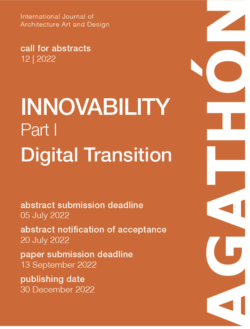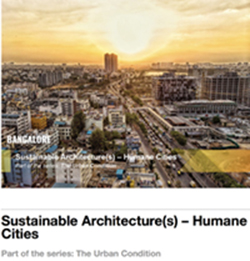ISSN (online): 1996-1073
Call of the Journal:
- A Holistic Overview of the Energy Sector | From Engineering Approaches to Innovative ML Solutions
- Active Power Filters and Power Quality
- Advanced Electric Vehicle Techniques
- Advanced Environmental Controls for High-Performance Buildings and Sustainability
- Advanced Solutions to Increase Resilience of Medium Voltage Distribution Networks
- Advanced Techniques to Increase Energy Efficiency by Optimization and Improving Power Quality
- Advances in Catalytic Technologies for Biodiesel Fuel Synthesis
- Advances in Fluid Power Systems
- Advances in Materials, Technologies and Controls for Sustainable Buildings
- Advances in Modelling for Nuclear Science and Engineering
- Big Data on Energy, Climate Change and Sustainability
- Building Sustainable Cities of the Future
- Community Microgrids
- Computational Modelling of Wave Energy Converters
- Condensation Heat Transfer
- Control of Wind Turbines
- COVID-19 Pandemics | Energy, Economic, Environmental, Social, Policy and Health Impacts
- Decarbonising Heating and Cooling
- Design and Application of Electrical Machines
- Design and Application of Innovation Catalysts for Hydrogenation
- Drilling Technologies for the Next Generations
- Dynamic Modelling and Control in Multilevel Converters
- Economic and Policy Challenges of the Energy Transition in CEE Countries
- Economic Growth and Environmental Degradation in the Paradigm of Energy Transition
- Electric Power Transmission | Active Subtransmission Networks
- Electric Vehicle Charging Networks
- Electrified Powertrains for a Sustainable Mobility | Topologies, Design and Integrated Energy Management Strategies
- Electrothermal Modeling of Solar Cells and Modules
- Embedded Discrete Fracture Model (EDFM) for Advanced Naturally and Hydraulically Fractured Reservoir Simulation
- Emerging Materials and Fabrication Methods for Solid Oxide Fuel Cells (SOFCs)
- Emerging Technologies for the Efficient Utilization of Coal and Biomass
- Energy and Environmental Sustainability 2020
- Energy Conversion and Operation Technologies for Smart Grid
- Energy Data Visualization
- Energy Flows and Synergies between Energy Networks
- Energy Management in the Multi-Source Systems
- Energy Transition and Social Innovation
- Environmental and Sustainable Built Environments
- Estimation of the State-of-Charge and State-of-Health of Lithium-Ion Batteries
- European Energy Policy at a Crossroads
- Future Electrical Machines
- Governance Strategies and Insights to Accelerate the Production and Diffusion of Hydrogen and Fuel-Cell Technologies
- Green Building Technologies 2020
- Heat and Mass Transfer in Multi-Phase Flows
- Heating, Cooling, and Ventilation Systems | Applications and Performance
- Improving Energy Efficiency through Data-Driven Modeling, Simulation and Optimization
- Integration of Electrical Vehicles and Renewable Energy Resources into Power Distribution Networks
- Interactive Integration of Electric Vehicles and Power Networks | Emerging Issues and Solutions
- Life Cycle Assessment of Environmental System
- Lifetime Extension of Wind Turbines and Wind Farms
- Machine-Learning Methods for Complex Flows
- Mechanical Industrial Plants for Solid Waste Treatment
- Modeling and Control of Hybrid Electric Vehicles
- Modelling of Multiphase Flows for Renewable Energy
- Multilevel Power Converters Control and Modulation Techniques
- Nanotechnology for Solar Energy Conversion
- Next Generation of Dye-Sensitized Solar Cells
- Novel Developments in Energy Resources Management, Distribution Systems, Microgrids and Energy Communities
- Numerical Simulation of Wind Turbine
- Optimal Design of Power Converters
- Optimization of Propulsion in Transport Means
- Organic Photovoltaics and Organic Transistors
- Performance and Reliability of Wide Bandgap Semiconductor and Nano Device-Based Circuits for Energy Systems
- Perovskite Solar Cells
- Photovoltaic Devices
- Protection and Communication Techniques in Modern Power Systems
- Protection of Future Multi-Terminal HVDC Grids
- Proton-Exchange Membrane Fuel Cells
- Real-Time Monitoring and Control for Wind Turbine Systems
- Recent Progress in Metal-Organic Frameworks for Energy-Related Applications
- Recent Studies in District Heating and Cooling Systems
- Research on Wireless Power Transfer System
- Sector Coupling for Sustainable Urban and Regional Energy Systems
- Selected Papers from the “20th CIRIAF National Congress | Sustainable Development and Preservation of Environment and Human Health”
- Smart Built Environment for Health and Comfort with Energy Efficiency
- Smart Technologies, Management and Control for Energy Systems and Networks
- Smart Thermostats for Energy Saving in Buildings
- Storages and Power Plant Flexibility for Improving Renewable Energy Penetration
- Systemic Issues to Wind and Solar Energy Deployment
- Technologies Conducive to Low Green House Gas Emission
- Thermal Management and Experimental Techniques for a Sustainable Mobility
- Thermal Storage Technologies
- Waste-to-Energy Technology Integrated with Carbon Capture
Jul
2021
The world is now facing two major crises: serious energy shortages and accelerating climate change. Solutions to these crises are interlinked, and the adoption of clean energy sources could solve both crises. For this purpose, scientists all over the world are working to develop various devices or systems to convert solar energy efficiently into electrical, chemical, or thermal energy. Like in most other research fields, nanotechnology is demonsrating huge potential in this field because the fascinating optical and electronical properties of nanomaterials play an important role in solar energy conversion and storage. However, low energy-conversion-efficiency, photocorrosion, and high-cost and complicated synthesis routes of nanomaterials are the main problems for their practical application. To obtain solutions of these problems and further advance this field, it is very important to share new research results and information among scientists. This Special Issue aims to share recent progress and developments in nanotechnology for solar energy conversion and storage. We invite authors to contribute original research articles as well as review articles covering a broad range of subjects, from modeling nanomaterials to new device applications for solar energy conversion and storage.
Keywords: Potential topics include but are not limited to the following – Semiconductor nanomaterials and nanostructured films (synthesis, characterization, and applications); Solar cells (quantum dots, organic–inorganic hydride, dye-sensitized, thin-film solar cell, etc.); Solar hydrogen (photoelectrochemical and photocatalytic hydrogen production); Nanophotocatalysis for CO2 reduction; Nanophotocatalysis for chemical reactions, air, and water remediation; Nanomaterials for solar to thermal energy conversion and storage; Mechanistic studies, engineering, and modeling on nanophotocatalysts.
Nanotechnology for Solar Energy Conversion
The world is now facing two major crises: serious energy shortages and accelerating climate change. Solutions to these crises are interlinked, and the adoption of clean energy sources could solve both crises. For this purpose, scientists all over the world are working to develop various devices or systems to convert solar energy efficiently into electrical, chemical, or thermal energy. Like in most other research fields, nanotechnology is demonsrating huge potential in this field because the fascinating optical and electronical properties of nanomaterials play an important role in solar energy conversion and storage. However, low energy-conversion-efficiency, photocorrosion, and high-cost and complicated synthesis routes of nanomaterials are the main problems for their practical application. To obtain solutions of these problems and further advance this field, it is very important to share new research results and information among scientists. This Special Issue aims to share recent progress and developments in nanotechnology for solar energy conversion and storage. We invite authors to contribute original research articles as well as review articles covering a broad range of subjects, from modeling nanomaterials to new device applications for solar energy conversion and storage.
Keywords: Potential topics include but are not limited to the following – Semiconductor nanomaterials and nanostructured films (synthesis, characterization, and applications); Solar cells (quantum dots, organic–inorganic hydride, dye-sensitized, thin-film solar cell, etc.); Solar hydrogen (photoelectrochemical and photocatalytic hydrogen production); Nanophotocatalysis for CO2 reduction; Nanophotocatalysis for chemical reactions, air, and water remediation; Nanomaterials for solar to thermal energy conversion and storage; Mechanistic studies, engineering, and modeling on nanophotocatalysts.
AGORA (FAO), AGRIS (FAO), CAB Abstracts (CABI), Chemical Abstracts (ACS), Current Contents – Engineering, Computing & Technology (Clarivate Analytics), DOAJ, EconPapers (RePEc), Ei Compendex / Engineering Village (Elsevier), ETDE (IEA), Genamics JournalSeek, HINARI (WHO), IDEAS (RePEc), Inspec (IET), Journal Citation Reports / Science Edition (Clarivate Analytics), Julkaisufoorumi Publication Forum (Federation of Finnish Learned Societies), LAPSE, Norwegian Register for Scientific Journals, Series and Publishers (NSD), RePEc, Science Citation Index Expanded – Web of Science (Clarivate Analytics), Scopus (Elsevier), Web of Science (Clarivate Analytics), CLOCKSS (Digital Archive), e-Helvetica (Swiss National Library Digital Archive), Academic OneFile (Gale/Cengage Learning), EBSCOhost (EBSCO Publishing), Energy & Power Source (EBSCO), Engineering Source (EBSCO), Google Scholar, J-Gate (Informatics India), Materials Science & Engineering (ProQuest), ProQuest Central (ProQuest), Science In Context (Gale/Cengage Learning), WorldCat (OCLC).
Info at: www.mdpi.com/journal/energies/apc
Guest Editor
Prof. Bashir A. Arima










